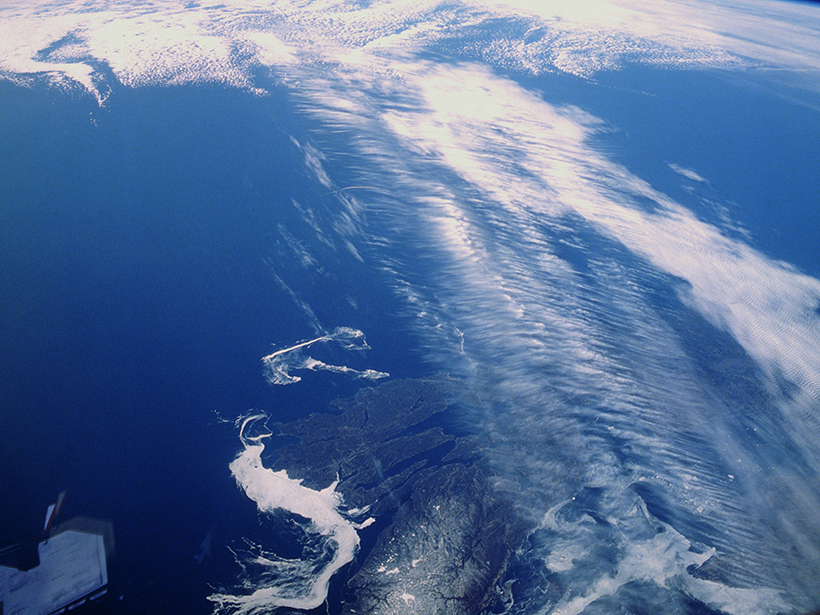Source: Geophysical Research Letters
Jet streams are like rivers. Just as the flow of a river is shaped by factors such as weather and natural obstacles, the trajectories of air currents flowing throughout the atmosphere are shaped by factors like sunlight, Earth’s rotation, and even atmospheric gases.
Researchers use climate models to predict how these streams respond to changes like rising greenhouse gas concentrations, warming temperatures, and more. But some of these models have oversimplified a crucial element: stratospheric chemistry, the changing concentrations of and reactions between stratospheric ozone, nitric oxide, and oxygen (among other compounds) and the interactions between ozone and atmospheric circulation.
In a new study, Chiodo and Polvani demonstrate that climate models may tend to overestimate the influence of increased levels of carbon dioxide on jet streams. The overestimation occurs when models fix ozone concentrations, that is, make them constant and unresponsive to other factors, such as greenhouse gases. Doing so could lead some models, namely, those stemming from the fifth phase of the Coupled Model Intercomparison Project, to overestimate by 20% the poleward shift of the midlatitude jet streams due to rising carbon dioxide.
The authors focused on the Southern Hemisphere’s midlatitude jet and compared two model types: those that consider ozone chemistry as an unchanging variable and models that regard it as interactive, undergoing chemical reactions, responding to changes in atmospheric dynamics, and shifting in response to rising carbon dioxide levels. Previous studies predicted that a quadrupling of carbon dioxide could shift the Southern Hemisphere midlatitude jet stream’s position toward Earth’s southern pole.
The study’s climate model run using fixed ozone inputs produced the expected response; the jet underwent a southward (poleward) shift by 0.8°. But in a model in which ozone levels were variable and interactive, the same jet shifted south by only 0.65°.
Behind the discrepancy, the authors suggest, is a negative feedback loop. When carbon dioxide levels rise, they cause stratospheric ozone concentrations to change, which in turn induces an equatorward translation of the jet, which opposes the effect of increased carbon dioxide.
The authors hope the next wave of climate models will incorporate interactive ozone chemistry, leading to more accurate predictions of carbon dioxide’s influence on jet streams. (Geophysical Research Letters, https://doi.org/10.1002/2016GL071011, 2017)
—Brendan Bane, Freelance Writer
Citation:
Bane, B. (2017), Including ozone complexities in climate change projections, Eos, 98, https://doi.org/10.1029/2017EO069833. Published on 22 March 2017.
Text © 2017. The authors. CC BY-NC-ND 3.0
Except where otherwise noted, images are subject to copyright. Any reuse without express permission from the copyright owner is prohibited.

